Neuroscience
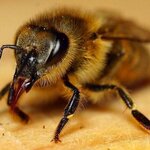
Scientists report that they can crank up insect aggression simply by interfering with a basic metabolic pathway.
Their study of fruit flies and honey bees shows a direct, causal link between brain metabolism (how the brain generates the energy it needs to function) and aggression.
The team reports its findings in the Proceedings of the National Academy of Sciences.
The new research follows up on previous work from the laboratory of University of Illinois entomology professor and Institute for Genomic Biology director Gene Robinson, who also led the new analysis. When he and his colleagues…

It is said that consuming oils with high polyunsaturated fatty acid content, in particular those containing omega-3s, is beneficial for the health, but is that true, or is it just epidemiologtists finding two curves that go the same direction and declaring causation?
Scientifically, any mechanisms underlying this phenomenon are poorly known. Researchers recently investigated the effect of lipids bearing polyunsaturated chains when they are integrated into cell membranes. Their work shows that the presence of these lipids makes the membranes more malleable and therefore more sensitive to…

If you've ever been on the freeway and saw the guy next to you holding his coffee with one hand, texting with the other, and steering with his kneecap while doing 80, you might find it quite plausible that humans only use 10% of their brain.
This is actually a scientific urban legend, though, and quite far from the truth. The man you see is engaging many parts of his brain - the driving uses the cerebellum, the texting uses his frontal lobe, reading his texts uses his visual cortex. He finally heard you honking after his kneecap steered into your lane. That's the temporal lobe. Although this…

Autism is not caused by a deficiency of oxytocin, according to new findings from the Stanford University School of Medicine and Lucile Packard Children's Hospital Stanford.
Low levels of oxytocin, a hormone involved in social functioning, have for years been suspected of causing autism. Prior research seeking a link has produced mixed results. Now, in the largest-ever study to test the purported connection, the range of blood oxytocin levels has been shown to be the same in children with autism as that observed in two comparison groups: children with autistic siblings and children…
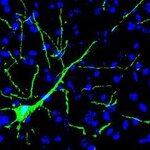
Scientists have grafted neurons reprogrammed from skin cells into the brains of mice with long-term stability for the first time. Six months after implantation, the neurons had become fully functionally integrated into the brain.
That's equivalent to about 20 years in human terms. Successful, stable implantation of neurons raises hope for future therapies that will replace sick neurons with healthy ones in the brains of Parkinson's disease patients, for example.
Prof. Dr. Jens Schwamborn and Kathrin Hemmer of the Luxembourg Centre for Systems Biomedicine (LCSB)…

Dyscalculia is a broad term for difficulty in understanding numbers, arithmetic and mathematics. It is different than 'I am not good at math', people with dyscalculia have difficulty with counting and adding, understanding patterns - when you should add, when to subtract - and even telling time.
In the wild world of epidemiology, there has been conjecture that being a pre-term baby was a risk factor for dyscalculia, because being pre-term children has also been linked to other cognitive deficits.
New research has concluded that pre-term children do not suffer from dyscalculia more often…
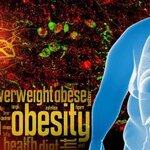
A new study in The Journal of Clinical Investigation (JCI) found that preventing weight gain, obesity, and ultimately diabetes could be as simple as keeping a nuclear receptor, PPARgamma, from being activated in a small part of the brain.
When researchers blocked the effects of PPARgamma in a small number of brain cells in mice, the animals ate less and became resistant to a high-fat diet.
Proopiomelanocortin (POMC) neurons are found in the hypothalamus and regulate food intake. When activated, these neurons cause a feeling of fullness and curb appetite. PPARgamma regulates the activation of…
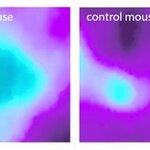
Autism is a neurodevelopmental disorder characterized by impaired social interaction, verbal and non-verbal communication, and by restricted and repetitive behaviors. Diagnosis is solely based on behavioral analysis, biological markers and neurological underpinnings remain unknown, but the search goes on. A lack of a biological underpinning makes the development of therapeutic strategies extremely difficult.
The insular cortex is an integral "hub", combining sensory, emotional and cognitive content. Not surprisingly, alterations in insular structure and function have been…
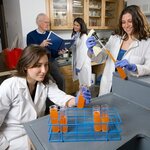
Some critics go after sucrose, and some go after fructose, but new research at the Annual Meeting of the Society for the Study of Ingestive Behavior (SSIB) says it's all bad; daily consumption of beverages sweetened with high-fructose corn syrup or sucrose were shown to impair the ability to learn and remember information, particularly when consumption occurs during adolescence.
For the research, both adult and adolescent rats were given daily access to sugar-sweetened beverages that mirror sugar concentrations found in common soft drinks. Adult rats that consumed the sugar-sweetened…

Why do addicts seek their drug? Why can’t they stop? The 21st
century view is that an addict’s brain becomes literally hardwired to crave the
drug. It’s called “incentive-sensitization” – the theory has been around since
1993 and was made mainstream by an article in the journal Addiction in 2000. Basically, the incentive-sensitization view of addiction
says that drugs tip the scale of how our brains calculate incentives: drugs
rewire the brain so that the drug is the brain’s only reward and thus its only
motivation.
Now, a new
article published online last week in the journal Neuroscience and…